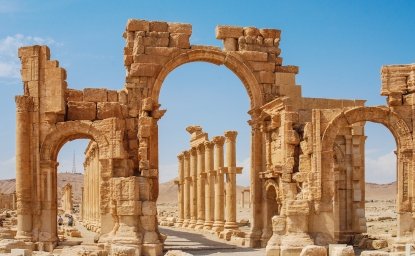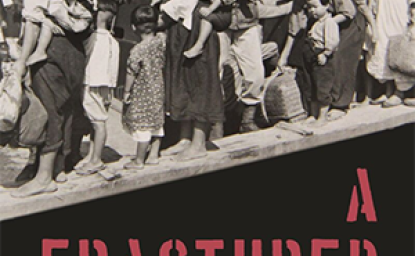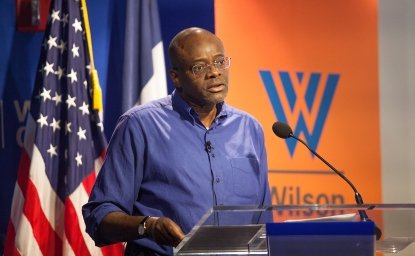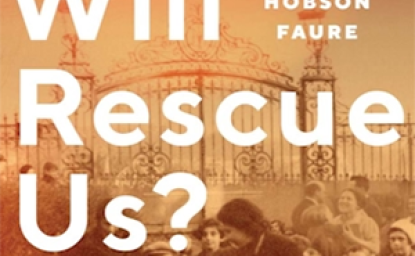The Clinton Administration and the Indian Nuclear Test That Did Not Happen - 1995-1996

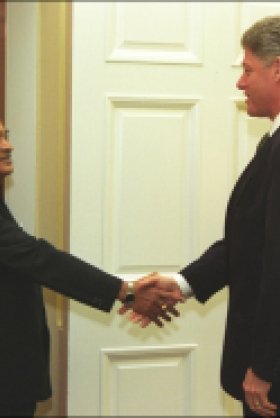
- U.S. Detected Indian Nuclear Test Preparations in 1995, but Photo Evidence was “Clear As Mud”
- Documents Reveal Washington’s Uncertainty Over Whether Prime Minister Rao Had Approved a Test, but Eventually State Department Intelligence Predicted a Non-Test
- U.S. Intelligence Characterized 1974 “Peaceful Nuclear Explosion” as “Near-Failure”
- Analysts Joked They Had Detected a Satellite TV Dish--Good for Viewing MTV on “Long Lonely Nights”
In the last months of 1995, U.S intelligence agencies detected signs of nuclear test preparations at India’s test site in Pokhran, but the satellite photos that analysts studied were “as clear as mud,” according to declassified documents published today by the National Security Archive and the Nuclear Proliferation International History Project.
The Clinton administration was worried that the Indians were about to stage a nuclear test because it could trigger a nuclear arms race with Pakistan and possibly encourage their “neighbors” to reconsider adherence to the Nonproliferation Treaty.[1] Documents in today’s publication shed light on the intelligence watch over the Indian test site and the Clinton administration’s efforts to head off a feared test.
Surveillance by U.S. intelligence of the Indian test site at Pokhran was intense. Declassified e-mails by Arms Control and Disarmament Agency staffers indirectly discuss satellite reconnaissance photography of the test site noting the mysterious rearrangement of cables possibly connecting to a test device. The e-mails provide readers with a sense of the difficulty of analyzing satellite photographs of intricate human-made structures. One of the e-mails, for instance, has this title: “The Mystery of the Cables Continues.” The messages are also laden with humor: the apparent installation of a satellite TV dish, said one, could provide: “MTV for those long, lonely nights.”
Released to the Archive through the mandatory declassification review process, the records add further granularity to American thinking on the South Asian nuclear situation, and offer useful parallels to similar questions facing the United States today.
For U.S. presidents seeking to strengthen a comprehensive test ban and the nuclear nonproliferation system, nuclear tests anywhere raise unwanted implications. For President Obama, the recent North Korean test raises another obstacle to the long-term goal of nuclear abolition. For President Bill Clinton, Indian test activities complicated his efforts to strengthen the nonproliferation system. Thus, when U.S. intelligence detected signs of nuclear test preparation at the Indian test site in the Thar Desert, the Clinton administration saw a danger.
The Indians strongly objected to the Nuclear Nonproliferation Treaty as a discriminatory measure against non-nuclear states and were heading towards a nuclear weapons capability. Under the cover of “nuclear ambiguity,” during the 1970s and 1980s, India’s nuclear and delivery system capabilities had increased, but weapons tests had been deferred, partly because of international pressure.[2] Facing domestic pressure to test, not least from the Hindu nationalists in the India People’s Party (the Bharatiya Janata Party, or BJP), Prime Minister Narasimha Rao had authorized preparations in 1995 but was not going to take the final step, partly because of his own ambivalence about nuclear weapons. Nevertheless, U.S. officials were worried.
Other disclosures in today’s release include:
▪ U.S. government concern that Pakistan had already started to resume uranium enrichment activities at levels beyond 5 percent (3-5 percent was the enrichment level used for reactor fuel). As part of its support for a fissile material production cut-off agreement, Washington was discussing this problem with the Pakistanis who denied that any highly enriched uranium production activity was in the works.
▪ The Indian “Peaceful Nuclear Explosion” of May 1974 was a “near failure,” according to a State Department Intelligence and Research summary [See Document 10]. This assertion is unexplained but may be a reference to the test’s very low explosive yield.
▪ The same INR report cited the signs of activity at the test site that began in November 1995, including improvements in security and “infrastructural upgrades,” and that made the Clinton administration worry that Rao might authorize a test.
▪ An August 1996 conversation between Ambassador Frank Wisner and BJP leader and future prime minister Atal Bihari Vajpayee. According to an embassy message, Vajpayee’s “body language” indicated that he “would favor a test.”
Two years later on 11 and 13 May 1998, under Vajpayee’s leadership, the Indians held several nuclear weapons tests at the Pokhran site.[3] As Washington had feared, Pakistan quickly followed with tests on 28 May. The U.S. intelligence establishment was taken by surprise-- satellite imagery could have provided early warning but it was not analyzed in time. Moreover, having learned from the 1995 experience (and other earlier episodes), the Indians had hidden their test preparations through a deception campaign, including far better concealment of the activities at Pokhran.[4]
The thirteen items reproduced here are the most meaningful of a State Department document release in response to a MDR request for an Arms Control and Disarmament Agency file on the 1995-96 events and on the status of Pakistan’s nuclear sites. Over 20 documents were withheld in their entirety which speaks to the continued sensitivity of some of the information from the perspective of State Department reviewers. Archie M. Bolster, the State Department lead reviewer for these documents, is a retired Foreign Service officer, who served in posts at the U.S. Embassy in Iran and India, among other places. Another 29 documents are out for review at other agencies so more about these events may be learned when the records have been processed.
Document 1. State Department telegram 28705 to U.S. Embassy India, “Arrange Wisner-Varma Meeting on Testing Issue,” 10 December 1995, Secret, transmitted via ACDA e-mail
Mandatory Declassification Review request. Obtained and contributed by William Burr.
By 10 December internal U.S. government concern that the Indians might be about to test had reached a critical mass because the State Department was sending a demarche to the Indian government to express “grave concerns” about the possibility of a test. Within a few days, Ambassador Frank Wisner was back in India, where he met with Prime Minister Rao’s principal secretary, A.N. Varma, showed him a satellite photograph of the test site, and warned that a test would “backfire” against India. In mid-December, when President Clinton called Rao, who had met him in Washington in 1994, the prime minister said that India would act “responsibly.”[5]
Document 2. State Department telegram 285472 to U.S. Embassy Tokyo, “ACDA Director Hollum’s Meeting with Japanese Officials,” 11 December 1995, Confidential, transmitted via ACDA e-mail
Mandatory Declassification Review request. Obtained and contributed by William Burr.
In the meantime ACDA Director John Hollum was in Japan, or on his way there, for talks with government officials. In light of the intelligence about a test, Hollum was instructed to “urge” the Japanese to convey their concern to the government of India and “strong opposition [to] any such tests.” The State Department did not want to make any public statements about the situation because that “would be counterproductive,” that is, it would tip the U.S.’s hand.
Document 3. Memorandum by Robert S. Rochlin, ACDA, “Implications of an Indian Nuclear Weapon Test,” Draft, 11 December 1995, Confidential
Mandatory Declassification Review request. Obtained and contributed by William Burr.
A senior scientist working at ACDA, Robert S. Rochlin, wrote a brief paper, possibly talking points for a senior official, about the presumably serious political and diplomatic consequences of an Indian test. In the event that Roa had made a decision to test, the United States did not have enough “leverage” to encourage a policy reversal or to prevent a regional arms race; Washington would need to organize a “concerted intervention by all the major states.”
Document 4. E-mail from ITAIN Division to Reports JAEIC, CTB, Nuke, “Indian Nuclear Update -951212.” 12 December 1995, Secret
Mandatory Declassification Review request. Obtained and contributed by William Burr.
This is one of the hand-full of e-mails that made it through the FOIA security review. Directed to the Joint Atomic Energy Intelligence Committee, the messages provide a glimmer of the intelligence monitoring process over the Indian nuclear test site (which one e-mail author jokingly describes as “our exciting Thar Desert watch”). At least two sites were under observation, one where the mysterious cables had been rearranged, and the other where there was much “personnel activity.”
This and the e-mails that follow are out of context and some of the references need explanation. The references to cables are to diagnostic cables that would be put down the test hole for measurement purposes, but the discussion of “shorter cables” needs to be explained, especially what made them a characteristic of U.S., Chinese, and “Russkie” nuclear tests. Also obscure is the reference to the ITAIN Division.
Document 5. E-mail from ITAIN Division to South Asian Romp n’ Stomp, “India Update – 19951213,” 13 December 1995, Secret
Mandatory Declassification Review request. Obtained and contributed by William Burr.
According to this message, the cable at the test site had changed its shape again, from a thick cable to two smaller connected cables. The “Stemming pile” is a reference to the mound of dirt that would cover the test device once it had been placed in the hole. The jokey reference to “South Asian Romp n’ Stomp” is obscure.
Document 6. Draft State Department telegram to U.S. Embassy Beijing, “Possible Indian Nuclear Test,” 15 December 1995, Secret, Handwritten edits by Robert S. Rochlin
Mandatory Declassification Review request. Obtained and contributed by William Burr.
On 15 December what the State Department had hoped would not happen did; the story leaked. That day, The New York Times published a story by Tim Weiner, under the headline “U.S. Suspects India Prepares to Conduct Nuclear Test.”[6] While some Indian journalists, politicians, and policy experts were convinced that the story was a U.S. government plant, Weiner had simply used due diligence in pursuing a lead from a non-government expert on nuclear proliferation issues.[7] Worried that the story would exacerbate regional tensions by encouraging Pakistan to “act in a manner that jeopardizes our nonproliferation efforts in South Asia,” the Department wanted to enlist the Chinese to encourage the Pakistanis to “exercise restraint in response to these reports.”
Document 7. Talking points, Prepared in State Department, Office of South Asian Regional Affairs, “Additional Testimony and Q’s and A’s for Congressional Briefing,”15 December 1995, Secret
Mandatory Declassification Review request. Obtained and contributed by William Burr.
These talking points review the state of play after Ambassador Wisner’s mid-December demarche to the Indian Foreign Ministry. Recognizing Prime Minister Rao’s cautiousness, U.S. government officials did not believe that he had made a decision to test, but they were aware that he was under great pressure to do so. Therefore, the U.S. government was working with allies, encouraging them “to urge India not to test.” Parallel discussions were taking place with the Pakistanis over the production of enriched uranium above the 3 to 5 percent level that could be used to fuel nuclear reactors. The Pakistanis were denying that they were producing highly enriched uranium but intelligence reports suggested that they were contemplating such action or had already begun the process.
Document 8. E-mail from ITAIN Division to South Asian Romp n’ Stomp, FITEDA [e-mail address for ACDA staffer], “India Update – 19951215,” Secret
Mandatory Declassification Review request. Obtained and contributed by William Burr.
U.S. government observers were perplexed (“clear as mud”) by what they saw at the test-site—the cables looked different, perhaps because the satellite photography had been taken at a different angle, and the National Photographic Interpretation Center (NPIC) was not sure what the explanation was. At Drill Site 3, where much activity had previously been observed, “lotsa trucks and folks” were busy and a “probable satellite television truck” had been deployed. One wit observed that that was for MTV viewing on “long lonely nights.” An alternative interpretation is that the analysts were seeing a digital communications system using small dishes that could send encrypted messages via satellite.[8]
Document 9. State Department telegram 008785 to U.S. Embassy India, “CTBT Letter from the President: India-Specific Talking Points,” 20 January 1996, Confidential, transmitted via ACDA e-mail
Mandatory Declassification Review request. Obtained and contributed by William Burr.
Weeks later, as it was becoming evident that Rao may not have not have made a decision to test, President Clinton resumed the search for Indian support for the comprehensive test ban by signing off on a letter to Rao. The State Department sent the Embassy talking points about the value of Indian support for the CTBT for Ambassador Wisner to use when delivering the Clinton letter. While supporting a nuclear policy of restraint, concerns over Pakistan and China and the impact of domestic pressure made Rao unlikely to support the comprehensive test ban. A subsequent government voted against the Treaty in the UN General Assembly in September 1997.
The e-mail enclosing the telegram is dated 19 January 1996, but the telegram is dated the next day, which is presumably when it was sent.
Document 10. State Department telegram 012545 to Intsum Collective, [State Department INR Report], “Intsum: India: Nuclear Test Unlikely,” 24 January 1996, Secret
Mandatory Declassification Review request. Obtained and contributed by William Burr.
After preparing an intelligence summary for Secretary of State Warren Christopher about Prime Minister Rao and his decision-making about nuclear tests, INR disseminated it to the “Intsum Collective,” possibly an interagency distribution system. Prepared by one of INR’s South Asia experts, Steven Ghitelman, it provides an overview of the test site preparations that began in November and describes Prime Minister Rao as facing pressures to test from the BJP and from the nuclear establishment. The pressures were not insurmountable because other considerations were important, such as avoiding international sanctions, continuing steps toward economic liberalization, and pressures to support the CTBT. Ghitelman concludes that it would be “vintage Rao” for him to allow the scientists to prepare for a test “while not authorizing them to conduct one.” That is what happened.
An intriguing but unexplained element of this report is the aside that the May 1974 Peaceful Nuclear Explosion was a “near-failure.” It is hard to know exactly what this means but it is worth noting that at the time the Indians claimed that the test had an explosive yield of fifteen kilotons but that seismic detection systems and other evidence suggested a much lower yield, somewhere between 2 to 8 kilotons. Perhaps the Indian scientists expected a more impressive result from the test than the low yield actually produced and that U.S. intelligence found this out. It is worth keeping in mind that the nuclear tests staged in May 1998 had lower explosive yields than the Indians asserted and the two tests the Indians claimed to have staged on 13 May could not even be detected.[9]
Document 11. E-mail from Caroline Russell, ACDA, to Lawrence Schein, Robert Rochlin et al., 8 July 1996, nonclassified
Mandatory Declassification Review request. Obtained and contributed by William Burr.
Discussion of U.S. government thinking about India’s capability to stage a nuclear weapons test during the 1990s was partly shaped by the “Z” Division of Lawrence Livermore Laboratories which generally downgraded those capabilities. This message provides interesting evidence on that point, noting that ‘the folks at Livermore” and other “India watchers” believe that the pressure for testing is politically inspired and “NOT [from] the technical community because [they] know how inadequate India’s capability is.” The risk was that “something would go wrong that would set the nuclear program back.” This view was an influential one that contributed to the surprise over the 1998 test.[10]
Document 12. U.S. Embassy New Delhi Telegram 9250 to State Department, “Ambassador’s Meeting with Opposition Leader,” 12 August 1996, Confidential, forwarded to U.S. Mission Geneva and by ACDA e-mail
Mandatory Declassification Review request. Obtained and contributed by William Burr.
Rao’s government fell in early 1996 and BJP leader Atal Bihari Vajpayee briefly served as prime minister. He authorized test preparations but a test was suspended when he fell from power after less than two weeks in office.[11] A few months later, Ambassador Wisner met with the former prime minister, apparently at the latter’s office in the Lok Sabha (lower house) where they discussed the CTBT. It was evident that Vajpayee was not interested in the Treaty and his “body language” indicated that he was inclined to favor a nuclear test. During one point in the discussion, Vajpayee asked, “What if we start underground tests?” According to the embassy’s message, “we interpret his question about testing as indicating that [he] and the BJP would favor a test” and would not be persuaded by U.S. arguments--“reason”--to forego one.
Document 13. E-mail from Caroline Russell to ACDA staffers, “Priority: India Nuclear Debate – Comments from Raja,” 1 November 1996, nonclassified, excised copy
Mandatory Declassification Review request. Obtained and contributed by William Burr.
The warning signs from Vajpayee were significant, but he was no longer prime minister and hopeful ACDA and State Department officials were looking for other signs that India would not test. On 31 October 1996, Raja Ramanna, the director of the Defence Research and Development Organisation, made a statement, quoted in the Times of India, that India already had a capability which did not need to be tested.[12] As Caroline Russell notes in her e-mail, Ramanna was an important figure in the history of the Indian nuclear program; his statements carried weight: “they do a lot for the keeping [sic] India from [a] testing effort.”
[1] For helpful background information on these and related developments, see George Perkovich, India’s Nuclear Bomb: The Impact on Global Proliferation (Berkeley, 1999), 353-377, Jacques Hymans, The Psychology of Nuclear Proliferation: Identity, Emotions, and Foreign Policy (Cambridge, 2006), 193-195, and Sumit Ganguly and Rahul Mukherji India Since 1980 (2011), 49-52. See also Jeffrey Richelson, Spying on the Bomb: American Nuclear Intelligence from Nazi Germany to Iran and North Korea (New York: W.W. Norton, 2006), 429-433.
[2] Ganguly and Mukherji, India since 1980, 50-51
[3] For the considerations that informed the 1998 test decision, see Perkovich, India’s Nuclear Bomb, 404-433, and Ganguly and Mukherji, India since 1980, 52.
[4] Richelson, Spying on the Bomb, 440-433,
[5] Strobe Talbott, Engaging India: Diplomacy, Democracy and the Bomb (Washington, D.C., 2004), 37.
[6] R. Jeffrey Smith followed up the next day with “Possible Nuclear Arms Test by India Concerns U.S,” Washington Post, 16 December 1995
[7] Perkovich, India’s Nuclear Bomb, 368.
[8] Richelson, Spying on the Bomb, 445.
[9] The two tests on 13 May did not register on external seismic systems, but the Indians claimed that the three tests on 11 May had a total yield of slightly over 55 kilotons, Some Western scientists claimed, however, that the total yield was in the range of 10 to 15 kilotons. For more details, see Robert S. Norris, “NRDC Nuclear Notebook: Known Nuclear Tests Worldwide, 1945-1998,” The Bulletin of the Atomic Scientists” November-December 1998, 65-67; Richelson, Spying on the Bomb, 438-439; and Perkovich, India’s Nuclear Bomb, 425-426.
[10] Richelson, Spying on the Bomb, 442.
[11] Perkovich, India’s Nuclear Bomb, 374-375.
[12] Ibid., 394.
Author
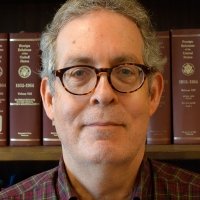
Senior Analyst, National Security Archive

Nuclear Proliferation International History Project
The Nuclear Proliferation International History Project is a global network of individuals and institutions engaged in the study of international nuclear history through archival documents, oral history interviews, and other empirical sources. Read more

